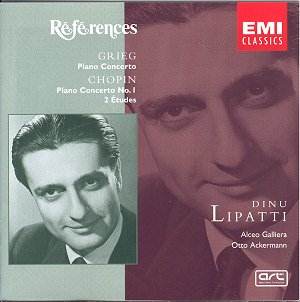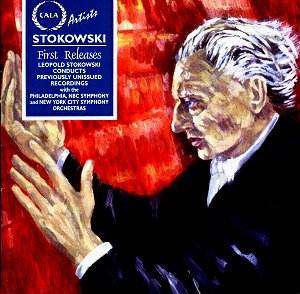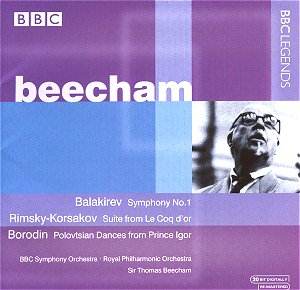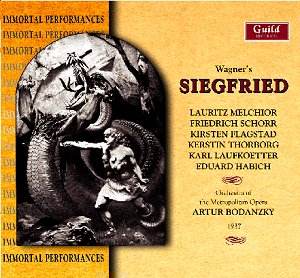 Composer: Arturo Toscanini
Composer: Arturo Toscanini
Works: Schubert: Symphony No. 8 ‘Unfinished’; Strauss: Don Juan; Haydn: Sinfonia Concertante in Bb; Bach: Passacaglia and Fugue in C minor (orch. Respighi)
Performers: NBC Symphony Orchestra
Recording: Live performance, 14 October 1939
Label: Guild Historical GHCD 2202
Arturo Toscanini’s 1939 performance with the NBC Symphony Orchestra encapsulates a pivotal moment in the evolution of orchestral sound and radio broadcasting. This concert, recorded in the opulent setting of Radio City’s Symphony Hall, features a program that deftly juxtaposes the lyrical poignancy of Schubert’s ‘Unfinished’ Symphony with the vigorous bravura of Strauss’s ‘Don Juan,’ alongside the chamber-like intimacy of Haydn’s Sinfonia Concertante and Respighi’s orchestrated version of Bach’s Passacaglia and Fugue. Such a repertoire not only showcases the diverse textures and emotional ranges of the classical canon but also reflects Toscanini’s own interpretive idiosyncrasies and his commitment to revealing the intricacies of each work.
Toscanini’s interpretation of Schubert’s ‘Unfinished’ is particularly striking. The conductor’s treatment of the first movement unfolds with a brooding intensity, allowing the poignant melodies to breathe while simultaneously maintaining a taut rhythmic structure. This combination of emotional depth and precision is emblematic of Toscanini’s approach, which often favored a palpable sense of urgency. The second movement, suffused with melancholy, is rendered with an exquisite delicacy; the NBC strings emerge as a cohesive unit, their sound rich yet transparent, highlighting the composer’s lyrical genius. Such attention to detail is further demonstrated in the interplay between the woodwinds and strings, which Toscanini emphasizes with a keen ear for color and nuance.
In juxtaposition, Strauss’s ‘Don Juan’ bursts forth with a vividness that showcases the orchestra’s technical prowess. Here, Toscanini’s command of orchestral dynamics is nothing short of remarkable. The clarity of orchestral lines, coupled with the rhythmic tension he cultivates, propels the piece forward with a fervor that captures the essence of youthful passion and the struggle for idealism. Notably, the brass section shines, executing the dramatic climaxes with both power and finesse, underscoring the inherent contradictions in Strauss’s portrayal of heroism.
Haydn’s Sinfonia Concertante, though less frequently performed, benefits from the spotlight it receives under Toscanini’s baton. The decision to feature prominent soloists—Robert Bloom (oboe), William Polesi (bassoon), Mischa Mischakoff (violin), and Frank Miller (cello)—adds a chamber-like quality to the orchestral fabric. Each soloist’s contribution is distinct, with Toscanini ensuring that their individual voices resonate against the orchestral backdrop. The interplay among the instruments is executed with a deftness that reveals Haydn’s wit and charm, while Toscanini’s pacing allows for moments of playful dialogue, particularly in the lively finale.
Respighi’s treatment of Bach’s Passacaglia, while often viewed as an ornate reimagining, introduces an interesting contrast to the program. Though some may find Respighi’s orchestration overly grandiose or cloying, Toscanini’s interpretation manages to balance the weight of the orchestral forces with the structural integrity of Bach’s original. The performance is marked by a keen understanding of counterpoint, even as Respighi’s embellishments risk overshadowing the purity of Bach’s lines. Here, the clarity of sound engineering plays a crucial role; the recording retains a sense of the original hall’s acoustics while allowing individual voices to be discerned within the dense texture, a testament to the restorative efforts that have preserved this historical artifact.
Toscanini’s concert, preserved for posterity, serves as a vital reminder of his formidable interpretative skills and the vibrant orchestral sound he cultivated. This recording not only illuminates the nuances of each work but also stands as a historical document of an era when live performances began to reach audiences far beyond the concert hall. The interplay of emotional depth, technical brilliance, and the warm, inviting sound quality make this collection an essential listen for both aficionados and newcomers alike. The legacy of Toscanini, with all his complexities, is compellingly encapsulated in this performance, affirming his status as one of the 20th century’s preeminent conductors.



